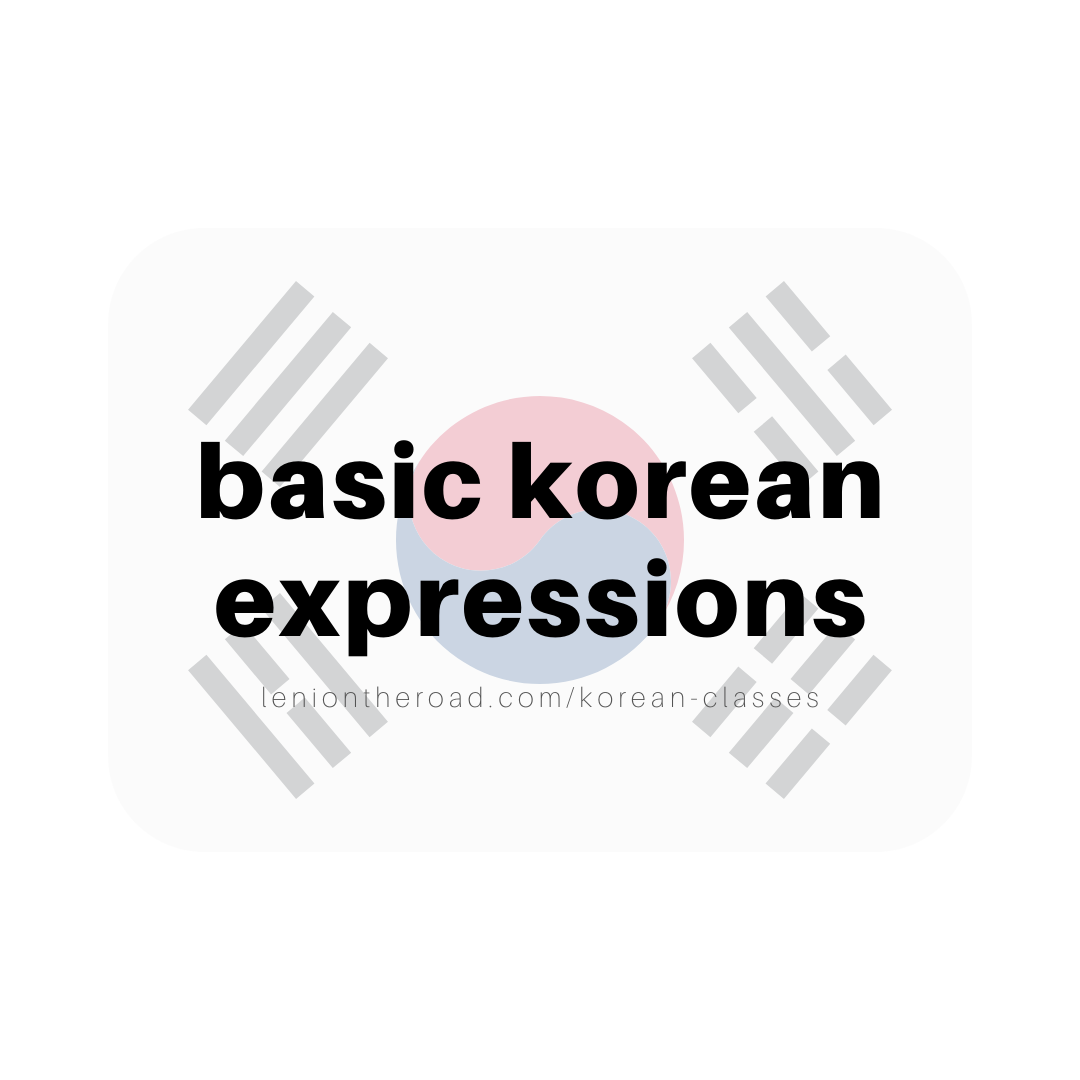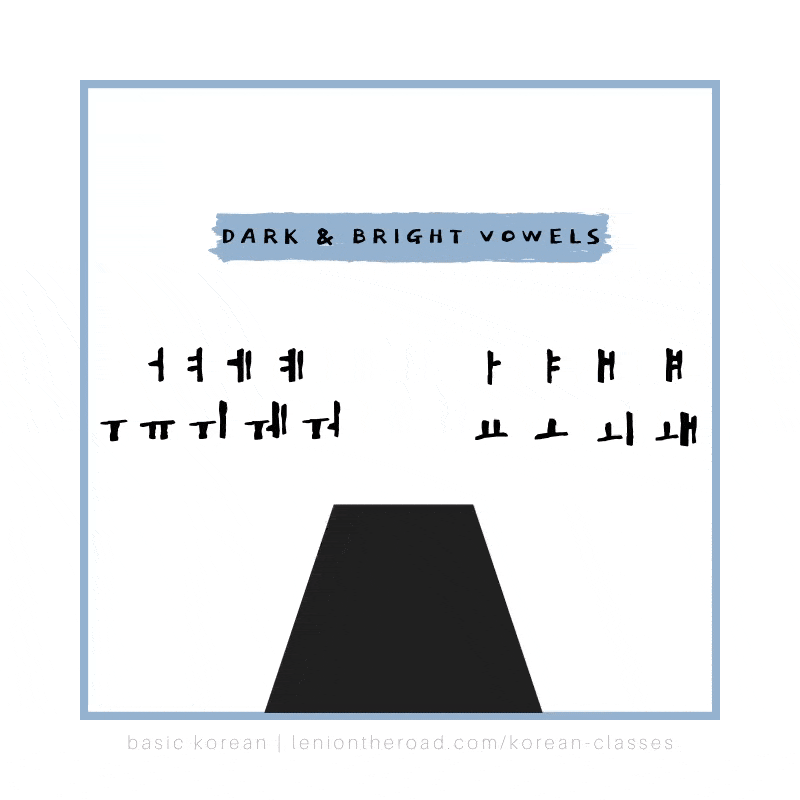Hangeul, the Korean alphabet
The Korean Alphabet, known as Hangeul (한글), can seem intimidating at first. Don’t be fooled! It works like the Latin alphabet where you take one letter and put it together with another to form a word. Although contrary to the Latin alphabet, Hangeul is not simply combined horizontally from left to right. At least not quite. It works in blocks. Essentially, you fill in the “block” from left to right, above then below. Ideally, there can never be just one letter in a Korean word. A block is often composed of:
a minimum of two letters combined (consonant and vowel) either vertically or horizontally (depending on the orientation of the alphabet),
Idem for a three-letter combination,
Same for a four-letter combination which is the maximum number of letter combinations in one block.
In very special cases, a block can make up to five letters*
There are 24 letters in Hangeul composed of 14 consonants, double consonants, and 10 vowels which form multiple vowel combinations. However, note that these letters make up 19 consonant sounds and 21 vowel sounds. These letters have names and particular sounds which changes based on the position of the letter in the block. Pay close attention to those particularities. In the printable module, you are presented with the individual Korean letter and their corresponding name and sound (as represented by the Latin alphabet as pronounced in English). Above the Korean letter, you will find its name (which is used to spell out words) and below it is an English alphabet on how it is to be pronounced. Consonants may have two different pronunciations depending on where the letter is found. The Latin alphabet below each individual Korean letter represents its pronunciation: on the left is how you would pronounce the letter if found in the beginning of the block, on the right is how the letter is pronounced if found at the end of the block.
Korean letters are written vertically or horizontally with the use of lines and shapes. These letters reflect the position of the lips when pronounced. As opposed to Chinese, Hangeul represents sound, not meaning.
Forming a word
Korean is a syllabic language where it in only allows a vowel (V) or a consonant-vowel (CV) syllable structure. Words are said as they are written and every letter is pronounced, with the exception of ㅇ, called a “place holder” which is silent when found at the beginning of the block. This being said, Korean words are often written with a consonant. The dominant Korean syllabic pattern is CV (consonant-vowel). Sometimes, it is possible to encounter a CC (consonant-consonant) combination, usually found at the end of the four-letter block. Vowels are often paired with the consonant, like a sacred marriage between them. The CV combination is rooted in Korean philosophy: there must always be a perfect balance between ying and yang, dark and light, left and right, up and down.
Dark, neutral and bright vowels
Vowels are either dark, neutral or bright. They are written with lines either vertically, horizontally and a combination of both.
Vowels with shorter horizontal lines written below or on the left of the longer vertical lines are called dark vowels. These are vowels ㅓ, ㅔ, ㅕ, ㅖ, ㅜ, ㅠ.
Vowels with shorter horizontal lines placed above or on the right of the longer vertical lines are called bright vowels. These are the vowels ㅏ,ㅐ,ㅑ,ㅒ,ㅗ,ㅛ.
Neutral vowels are the single-standing vertical and horizontal vowels ㅡ andㅣ.
These “dark” and “bright” vowels are called as such as references to the rising sun. Vowels facing up and to right are considered bright vowels since the earth is illuminated by the light of the sun when it rises from the east in the morning. On the other hand, vowels facing down and to the left are considered dark vowels since the earth is covered in complete darkness when the sun sets on the west in the evening. This follows the Korean philosophy respecting the balance of the yin and yang. As it is, dark and bright vowels cannot be combined.
One block makes up one syllable.
Two-letter block
Take the consonant ㄱ and the vowel ㅏ give you the two-letter block 가 (go).
ㄱ+ㅏ= 가
Three-letter block
Take the consonant ㅎ, the vowelㅏ, and the consonant ㄴ forms 한
Take the consonant ㄱ, the vowel ㅡ, and the consonant ㄹ makes 글
Together, they spell 한글 (the Korean alphabet).
(ㅎ+ㅏ+ㄴ)+(ㄱ+ㅡ+ㄹ) = 한글
Four-letter block
Take the consonant ㄷ, the vowelㅏ, and the consonants ㄹ ㄱ produce 닭 (chicken)
ㄷ+ㅏ+ ㄹ+ㄱ = 닭
💡 Handwriting tip: write consonants slightly smaller than the vowel when in combination in blocks.
Korean alphabet is a pretty straight-forward concept to learn. In my personal opinion, it is the easiest East Asian script to learn, compared to Chinese and Japanese scripts.
Practice reading this basic Korean expressions:
안녕하세요 (an-yeong-ha-se-yo) - hello
안녕 (an-yeong) - hi
그래 (keu-rae), 예 (ye), 네 (ne) - yes
아니오 (a-ni-yi) - no
오빠 (o-ppa) - big brother (TG: kuya), honey (if in a relationship)
아기 (a-gi) - baby
뭐라고 ? (mwo-ra-go) - what (did you say)? (very casual)
감사합니다 (kam-sa-ham-ni-da) - thank you (polite)
아가씨 (a-ka-ssi) - miss
사랑해 (sa-rang-hae) - i love you (informal)
✏️ Trying writing/typing your name in Korean and comment it below!





